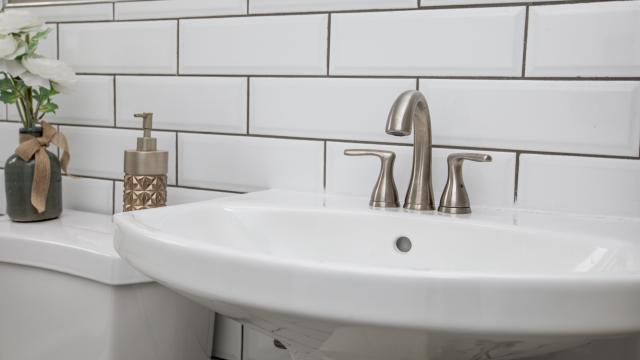Tile is beautiful, durable, and the perfect material to sleep on when you’re hungover. It’s a natural choice for damp areas like kitchens, bathrooms, and mudrooms because it tolerates water well and is easy to clean. Tile is so durable and seemingly impervious to dirt and grime, in fact, that we sometimes make the mistake of assuming it doesn’t require any real maintenance — just stick it on the wall or floor and forget it, right?
Unfortunately, no. If you’ve had tile in your home for any length of time you may have noticed that it can, in fact, get dingy and dirty — and if left to its own devices it will eventually begin to degrade, crack, and begin to loosen. Like everything else in this transient world, tile requires a bit of regular care if it is going to endure — and one of the most important things you can do for your tile and the grout running between it is to seal it regularly.
Not all tile needs sealing — and even if it does, you may not know when your tile was last sealed, especially if you’re new to the home. Here’s how to tell if your tile and grout need to be sealed (or resealed), and why it’s a good idea to do so.
Not all tile needs sealing
Sealing tile and grout is all about preventing water penetration. Water is literally trying to destroy your home every single minute. If it’s not doing so in the form of hurricanes and floods, it’s dripping from a leaky pipe into your drywall or floorboards, breeding mould and encouraging rot. And it’s also probably sinking into the pores of your tile and grout and breeding mould, trapping dirt, and eroding the adhesive bond of your thinset or mastic.
Pretty much all grout needs to be sealed — grout is a cement, and pretty universally porous. A sealant will protect your grout from this watery invasion, helping to keep it looking fresh and new while forestalling destructive doom. Sealing grout will also prevent stains that result from water pulling dirt deep into the grout, where’s it’s difficult to clean.
But not all tile needs to be sealed. Natural stone almost always needs sealing, but most ceramic or porcelain tiles aren’t porous, and so don’t require it — but there are exceptions to this rule, too, so it’s a good idea to always check with the manufacturer of your tile to see what they recommend.
How to know if it’s time to reseal
If you’ve got porous tile like a natural stone (travertine or marble, for example) and you’re not sure if it needs to be sealed, you can perform a very simple test: Dribble a few drops of water on the tile and grout. If it beads up and isn’t absorbed, your tile is sealed and the sealant is holding up. If liquid sinks into the tile or grout and darkens the area, your tile needs to be sealed. And don’t assume that just because your tile has been freshly installed by professionals that it has been sealed — since grout needs time to cure, many installers don’t seal the tile when they’re done putting it in, so make sure to test new tile as well as existing tile.
How often do you need to worry about this? Most tile manufacturers and installers recommend sealing your porous tile and grout at least every two years, but an annual application is a better idea — you can’t seal too often, so why not play it safe?
How to choose a sealant for tile and grout
Once you’ve determined your tile or grout need sealing, there are a few more factors to consider.
Type of sealant. There are essentially two kinds of tile sealants: Penetrating and non-penetrating. Penetrating sealants sink into the grout and tile and fill up those tiny pores, keeping water and dirt out. These sealants are ideal for areas exposed to a lot of water, like showers or bathroom floors, because they allow the grout and tile to “breath” and don’t trap water that might get past them.
Non-penetrating sealants form a surface coating on top of the tile and grout that repels water — but also prevents it from evaporating easily, which can promote mould growth and staining. While a penetrating sealant is usually your best option, for low-moisture areas like kitchen floors, a non-penetrating sealer can be good enough, and will be a little easier to apply. Before you jump in, always test a sealer on an inconspicuous spot to ensure it’s not going to alter the colour profile of the tile or grout.
It doesn’t matter how long the tile has been up or when the last sealant was applied — it’s possible to seal tile and grout no matter how old it is as long as it’s still in good shape — but you should definitely give the existing tile and grout a solid cleaning before you seal it.

Leave a Reply
You must be logged in to post a comment.